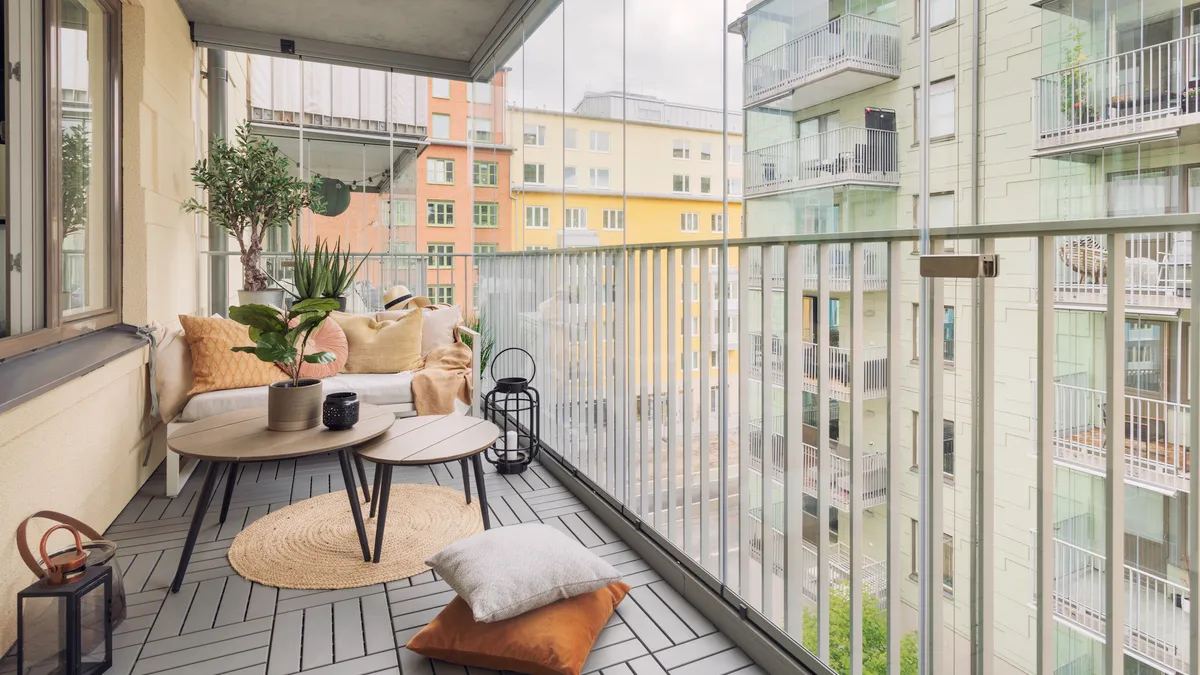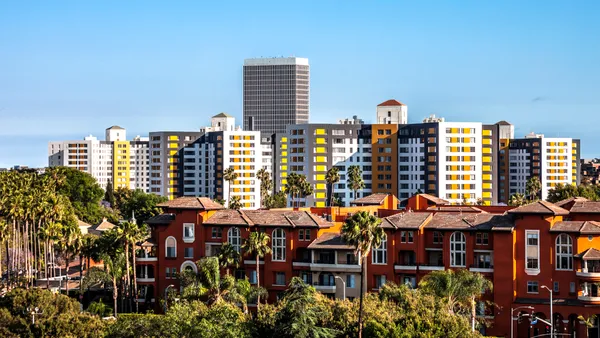Dive Brief:
- The national average multifamily rent rose by $10 in July 2022, up to another record high at $1,717. While this is a strong jump by historical standards, it is also the lowest national average rent increase since January of this year, according to Yardi Matrix’s latest Matrix Multifamily National Report.
- Rents rose 12.6% YOY in July, with growth down 110 basis points from the previous month, according to Yardi. RealPage recorded 12.2% YOY effective asking rent growth in its own July rent report, down from 13.8% in June.
- Orlando, Florida (20.2%), and Miami (19.5%) still lead the nation in rent growth, while Tampa, Florida, has fallen behind Orange County, California, and Raleigh, North Carolina, at 17.4%, according to Yardi. All have dropped 3 to 4 percentage points compared to the previous month.
Dive Insight:
While July 2022’s monthly rent growth was only the equivalent of one-third of July 2021’s, it is still the second-highest growth rate of any July in the last decade, according to Jay Parsons, vice president, head of economics and industry principles at RealPage.
RealPage had previously anticipated that 2021’s strong rent growth is unlikely to repeat in the near future. The firm points to a drop from record-level apartment occupancy and higher average vacancy periods as signs that the market is normalizing.
| Market | YOY Rent Growth, July 2022 | YOY Rent Growth, June 2022 | Difference |
|---|---|---|---|
| Orlando, Florida | 20.2% | 24.0% | -3.8 |
| Miami Metro | 19.5% | 23.4% | -3.9 |
| Orange County, California | 17.6% | 18.9% | -1.3 |
| Raleigh, North Carolina | 17.5% | 18.9% | -1.4 |
| Tampa, Florida | 17.4% | 20.3% | -2.9 |
| Nashville, Tennessee | 16.5% | 18.1% | -1.6 |
| Dallas | 16.1% | 17.0% | -0.9 |
| Charlotte, North Carolina | 15.4% | 16.9% | -1.5 |
| Seattle | 14.9% | 15.9% | -1.0 |
| Las Vegas | 14.0% | 17.1% | -3.1 |
SOURCE: Yardi Matrix
“The pandemic and the resulting work-from-anywhere phenomenon ‘pushed forward’ some future demand into the second half of 2020 and through 2021, sending apartment demand numbers far above previous peaks,” Parsons said in the report. “We’re now seeing the other side of that phenomenon, with leasing traffic [number of prospects] coming in summer 2022 measuring slightly below the pre-COVID norms.”
Yardi echoed this assessment, and considers this slowing to be the result of “an inevitable return to the mean, coincidental to the sudden slowing of the economy, or some combination of the two.” The Federal Reserve has raised policy rates by 150 basis points in two months in an effort to slow inflation, and while a weaker economy could cool off rent prices, the effect may not be immediate, as higher for-sale home prices could drive multifamily demand.
As for ongoing strong rent growth, Yardi referenced the imbalance in supply and demand outlined in the recent report conducted by Hoyt Advisory Services, working on behalf of the NAA and NMHC, which outlines a need for 4.3 million new apartment units by 2035. The firm anticipates more than 400,000 new apartment deliveries annually over the next several years, but notes that sustained growth in market-rate and affordable housing is necessary to fix the housing shortage











